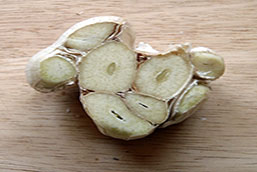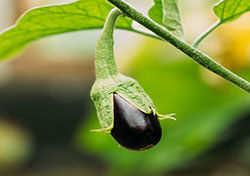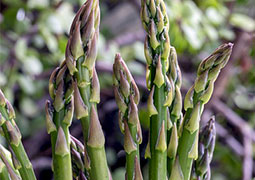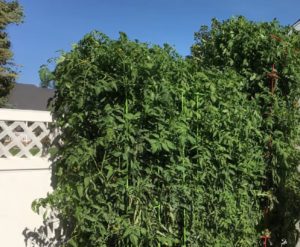Today we answer what everyone’s thinking; how to grow kohlrabi and what actually is this vegetable?
I feel like this plant doesn’t have the recognition it deserves. If you don’t know what a kohlrabi is, you’re probably not alone.
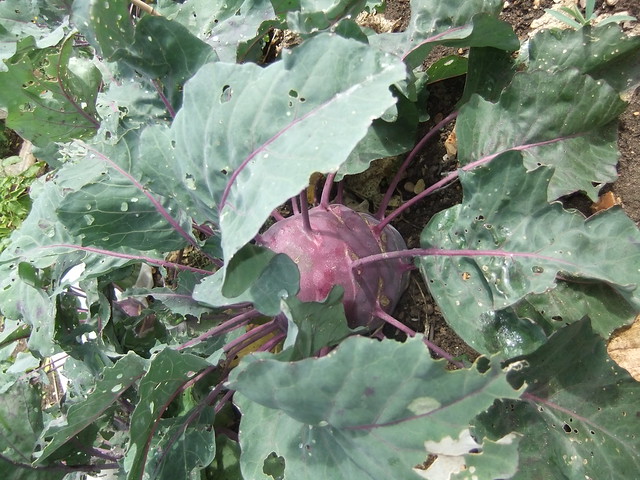
After all, it’s quite an unfamiliar vegetable in American cuisine. It’s that weird-looking vegetable you sometimes see at your local grocery store.
And by weird-looking, I mean it’s what a turnip would look like if it wanted to be an octopus.
Okay, are you still with me? I know you might be confused but I hope you’re also hyped up to discover more things about this plant.
Because trust me, you would want to grow this in your home garden.
Kohlrabi is also called German turnip or turnip cabbage in other parts of the world. Hence, its resemblance to a warped version of a turnip.
But this plant is no turnip at all, it only looks like one. It’s actually related to the cabbage family and definitely not a root vegetable.
It has a swollen globe-shaped stem that can either be white purple or green. This plant also has a similar texture with that of a broccoli stem. You can also compare it with the texture of a cabbage heart.
I often use kohlrabi bulbs for my salads. It has that crisp and mild sweetness that goes well with it.
For the kohlrabi leaves, I just cook it like how I use Kale or Spinach in my recipes. After growing kohlrabi, I hope you come back to this post and tell me what recipes worked for you!
Have I mentioned that this underrated plant is also highly nutritious? It’s an excellent source of vitamin C and vitamin B6. And equally a good source of fiber and potassium.
Isn’t it wonderful how these delicious greens that come with tons of health benefits can be grown in your home? Mine produced great results so I’m here to share all the things I know about how to grow kohlrabi.
Get ready for a detailed guide on growing kohlrabi at home.
How to Grow Your Own Kohlrabi
There is something you should know first before starting this plant project. Kohlrabi is a cool-weather crop that is very easy to grow! You read that right, so no need to get nervous.
Attention all budding gardeners, growing kohlrabi at home is beginner-friendly.
It’s a fast-maturing vegetable that will be a great addition to any garden. Look, it just takes about 45 to 60 days for kohlrabi to mature depending on the variety and weather conditions. It’s best grown in fall or early spring.
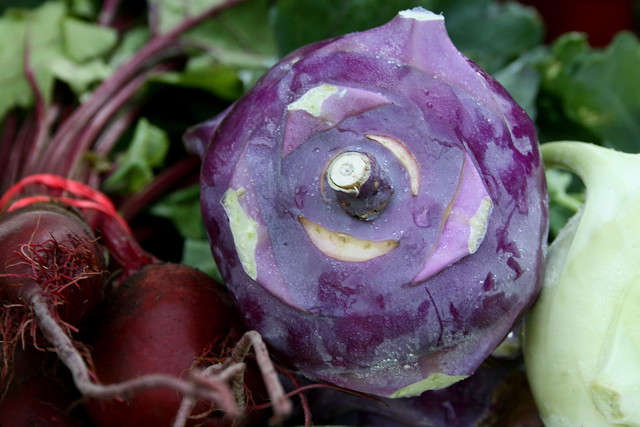
As said above, kohlrabi grows quickly so part of the maintenance for this plant is keeping the soil moist and rich in organic matter—you know, just the basic plant care for any of your other crops.
If what I’ve listed above haven’t sold you yet on growing kohlrabi at home (though I hope by now you’ve already fallen in love with this plant, just like I did), then here’s another reason for you to include it in your garden:
Kohlrabi is not often available in the local market.
Not many people are familiar with this wonderful vegetable so that’s why you only seldom see them. So if you do want to enjoy the taste and health benefits of kohlrabi, it’s best to just grow it yourself!
Time to learn how to grow kohlrabi!
Planting Kohlrabi : Step-By-Step
When is the best time to plant kohlrabi?
The best time to plant this vegetable is in the cool seasons. Kohlrabi is a cool-weather crop that is best grown in both Spring and Fall. Kohlrabi plants thrive in cool climates, especially with temperatures between 7 and 24°C (45–75°F).
It matures in cool weather and can very much take a light frost.
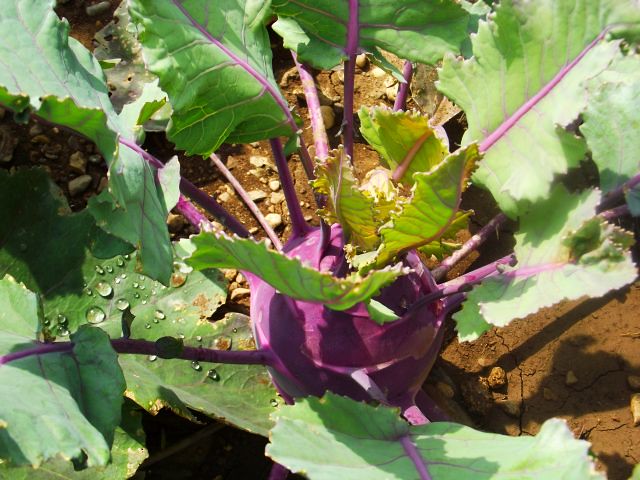
You can start sowing kohlrabi seeds as early as 1 to 2 weeks prior to your local frost date.
If you opt for a fall planting, I suggest you time your seedlings so that your plant will mature about 2 to 3 weeks after the first local frost date.
For those living in an area with a hot summer, you should plant kohlrabi in time for a Fall harvest.
This is because your kohlrabi will start to get woody when it starts getting warm.
I know you’re excited to start planting your kohlrabi.
You probably already have your gears ready but remember to check your calendar first. As always, timing is key to successful plant growth.
Should I use kohlrabi seeds, plant seedlings or transplants?
Today we are growing kohlrabi from seeds. I see that planting with kohlrabi seeds is the best way to start a kohlrabi plant.
You can find kohlrabi seeds in the market or if you want a more convenient option, there are a lot of choices online.
You know you can always opt to run down to your local nursery to check if there are any kohlrabi seeds available.
There are a number of varieties of kohlrabi that you can choose from that would best fit your garden.
These are most commonly grouped into green, purple and white kohlrabi.
The green kohlrabi comes in medium to large sizes. It is hardy in different types of climates and quick to mature.
I noticed that the purple kohlrabi, on the other hand, is more resistant to pests like cabbage worms.
Today we are planting purple kohlrabi; the Early Purple Vienna variant.
I got my Early Purple Vienna seeds on Amazon and they worked amazingly. You only need one packet.
I was able to harvest my healthy-looking kohlrabi in just about 45 to 60 days. It had a vibrant violet hue on its bulb and it tasted like a sweeter version of cabbage.
It was very crisp and fresh, I just served it raw!
Where should I plant kohlrabi?
Some people plant kohlrabi in containers but I don’t really feel like it’s well suited for container gardening due to its large roots.
Some gardeners also sow seeds indoors and transplant them later but that can be tricky. The roots may coil up on the container and that will stress out the plant.
Eventually, you might not get a good bulb size due to this.
This is why I prefer to just sow kohlrabi seeds directly in the garden. I strongly suggest you do so as well.
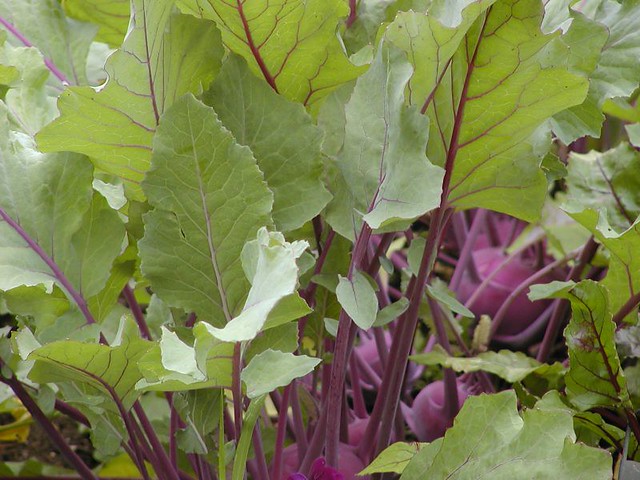
Your raised bed is more than capable of handling kohlrabi’s eventual size. Plant kohlrabi in a spot where it can get at least six hours of full sun with a loamy and well-drained soil.
How do I prepare the soil for planting kohlrabi?
As soon as you have a location that has a full sun with good drainage check the quality of your soil.
It should be moist, loamy, and fertile (rich in organic matter) with a neutral soil pH of around 5.5 to 6.8. This plant can also tolerate a slightly alkaline soil with a pH up to 7.5.
Now it is time to prepare the raised beds. See that you turn the soil under to a depth of 8 inches.
Level with a rake after to remove grass and stones (if any). We don’t want the soil to be too deep since the kohlrabi stems will grow into bulbs later on.
Keep the soil consistently moist and at temperatures between 7 and 24°C (45–75°F).
Improve your soil by working in organic matter such as well-rotted manure or compost.
As always, NEVER use fresh manure as it may contain dangerous bacteria that may harm your plants.
During this time of planting, I’ve seen that mixing in a slow-release fertilizer in my raised bed produced great results.
I just applied for the next round of fertilizer after two months.
Doing this, or adding any vegetable fertilizer during the planting period aids the plants with a steady amount of nutrient as they’re starting to grow.
A well-prepared soil is vital to the healthy growth of your plant so make sure you give proper attention to this step.
How do I plant kohlrabi?
Assuming that you followed the guidelines above and you’ve already prepared the soil, it’s finally time to plant.
In this part, we’ll discuss the proper depth and spacing of your kohlrabi seeds. This will include the proper planting of kohlrabi for a spring crop and fall crop.
Here are the guidelines for a spring crop;
- Directly seed the kohlrabi seeds one-fourth to one-half inch deep.
- Sow seeds in rows one-inch apart.
- Keeps the rows 18 inches apart from each other
- Gently press down the soil until firm
- Water generously
Here are the guidelines for a fall crop;
- Directly seed the kohlrabi seeds one-fourth to one-half inch deep.
- Sow three seeds every four inches
- Gently press down the soil until firm
- Water generously
Congratulations! You’re done with the planting part, now you have to wait for the seedlings to emerge. This happens in about 14 to 21 days.
Growing Kohlrabi
How and when do I thin my kohlrabi plant?
You can start thinning your plants when you see the kohlrabi having three to four true leaves.
For a spring crop, thin the seedlings so that there are four inches of space between the plants.
For a fall crop, thin the seedlings so that there are four inches of space between the plants.
For the giant varieties of kohlrabi, space should be 12 inches. When the giant kohlrabi reaches two inches in width, space again to have 12 inches between the plants.
How can I properly water my kohlrabi plant?
This plant has a shallow root system so I suggest you water it consistently and regularly to keep the plants from drying out.
See to it that you apply 1 to 2 inches of water per week. Applying organic mulches also aids in conserving water and keeping the soil moist and cool.
I suggest you water your plants at low pressure at the soil level.
Which fertilizer should I use and when do I use it?
After the initial addition of slow-release fertilizer during the planting period, apply the next round of slow-release fertilizer after two months.
The one I got from Amazon really helped my plants to grow, it’s definitely worth a try.
You can also opt to use a regular vegetable fertilizer with a high content of nitrogen to ensure rapid plant growth.
How much sun does my kohlrabi plant need?
Choose a location that has full sun for your kohlrabi plant. It needs to be exposed to full sunlight for at least 6 hours per day for optimum growth and development. The more sunlight it can get, the better.
Which climate better suits kohlrabi? (Best Hardiness Zones)
Again, kohlrabi plants thrive in cool climates. It matures in cool weather and can take a light frost weather. The cool temperatures between 7 and 24°C (45–75°F) work perfectly well with kohlrabi.
Basically, kohlrabi is generally suitable for the U.S. Department of Agriculture hardiness zones 6 through 11.
How long does it take to grow kohlrabi?
It’s exciting to watch your kohlrabi mature especially when it’s such a fast-growing plant. It only takes 45 to 60 days to grow kohlrabi. Seedlings will emerge in 14 to 21 days. Within a month, you will see bulbs forming.
By the time these bulbs reach 5 to 7.6 cm (2-3 in) in diameter, it’s matured completely and can now be harvested.
What are the common diseases and pests that could ruin my kohlrabi plant and how do I avoid it?
Watching your kohlrabi plants maturing, I understand that you might worry about the pests or other diseases that might attack your plant. However, there’s no need to panic. I’ve listed down some of the problems you might encounter down below and how you can deal with them:
- Powdery mildew
You can spot this disease when you start seeing a white, powdery growth on the upper surface of the leaves. This leads to reduced yield and sadly, poor fruit quality.
To fight this, always be on the lookout for weeds.
2. Downy mildew
You can spot this disease when you observe yellow spots on leaf surfaces and patches of mold on the underside. This nasty disease favors cool humid conditions. Avoid this disease by planting resistant cultivars.
Like I’ve mentioned in the planting stage, you should use well-drained soils. Also, remember not to overcrowd your plants. Avoid overhead irrigation. Water your kohlrabi from the base, as I’ve suggested.
3. Cabbage aphid
This pest can stunt the growth of your plant or worse, it can kill kohlrabi completely. Cabbage aphids are soft-bodied insects that often appear in clumps. Always be on the lookout for these critters. They are grey-green in color covered in a white waxy coating.
They will feed on your plant.
Prune out affected plants. Spray with a strong jet of water to knock these critters away.
4. Cabbage worms
These slow-moving worms are green in color. It is hairy with a velvet-like appearance; it may have light yellow to orange stripes down on its back. They leave large ragged holes in your kohlrabi leaves. Sometimes they are bored into the head.
As soon as you see one, pick it out. Scrape the eggs away from leaves prior to hatching if there are any.
To all nervous gardeners reading this, I suggest you approach each problem with a calmer attitude. Even I had my own share of panicking when I just started gardening.
Through those obstacles, I’ve learned to pay more attention to my plants.
If you encounter any other problems with your kohlrabi plants, don’t be shy and comment down below.
I’ll be sure to answer as many as possible! And I’m sure other gardeners will be eager to share some of their tips as well.
What other crops could I plant together with my kohlrabi to maximize my garden space?
Eager to plant some more? If you’re a budding gardener who has eyes on starting a full vegetable garden, you should be familiar with companion planting.
What is companion planting?
Simple, it’s a form of polyculture used by fellow gardeners and farmers that is believed to produce mutual benefits for certain plants and crops planted next to each other.
Basically, the idea is by planting these companion plants, the crops can help each other grow healthily.
To list some of the benefits: natural pest control, higher crop yield and shade protection for sun-sensitive plants.
You can get all these benefits while maximizing your garden space! Truly perfect for those with limited garden area.
Here are some crops that will like being close with your cucumber:
- Potatoes
- Onions
- Lettuce
- Beets
- Cucumbers
- Bush Beans
What are the crops that will not go well with kohlrabi?
While we can see that kohlrabi has a great number of companion plants that we should be thankful for, there are just some plants and crops that will never go well with this vegetable.
Take the cabbage family for example. Kohlrabi is highly susceptible to cabbage worms, loopers, and aphids. Planting them close together will just attract more pests and turn your plant to an open buffet.
Here are some of the kohlrabi’s bad neighbors:
- Strawberries
- Pepper
- Tomatoes
- Pole Beans
Harvesting Kohlrabi
When is the best time to harvest kohlrabi?
The Early Purple Vienna variety is quick to mature and will generally be ready to harvest in about 45-60 days, or when you see the young stem reaches about 2 to 3 inches in diameter.
Don’t wait too long to harvest though. The stems get tough and woody, the longer you wait.
Harvesting tip! You can always harvest the young leaves of the plant during the growing period just like what you do to a Kale plant.
How do I harvest kohlrabi?
Harvesting kohlrabi is quite simple. Just grasp the bulb and cut it from the base of the plant with pruning shears, a knife or clippers. Trim the leaves from the kohlrabi’s round stem before cooking or storing.
Again, if you delay your harvest, the kohlrabi bulb will turn woody and tough. In addition, it will lose the mild sweetness that we’re aiming for! It’s going to be bitter. We don’t want that so don’t wait too long to harvest.
What is the best way to store the kohlrabi that I have harvested?
The best way to store your freshly harvested kohlrabi is by keeping it in a spot with cold, moist conditions (at temperatures between 32°-40°F (0°-4°C). If you can, see that it stores well at 36°F and 95% humidity.
Store your harvested kohlrabi at home on your refrigerator, at the vegetable crisper section. Place it in a perforated plastic bag. This way, the kohlrabi will keep its freshness for about two to four weeks.
If you store the kohlrabi with just the bulb with no leaves attached, it can keep for 2 to 3 months.
Also, you can always freeze kohlrabi.
That’s it! You’ve completed the kohlrabi growing journey from sowing seeds to harvesting! You now use it for cooking.
To prepare the kohlrabi bulbs, just peel off the outermost tough layer. It will look somewhat like an apple (and would taste a little bit like one too).
Slice into your desired size and amount or into what the recipe is asking for. They’re perfect for simple stir-frys and salads.
A crispy apple and kohlrabi salad is something you should definitely try. It is so refreshing and you can really taste the mild sweetness of the crop.
The kohlrabi leaves, on the other hand, can be enjoyed and used just like any collard greens such as spinach. Cook them by sauteing, steaming or stir-frying. You can also just serve them raw for salads.
Featured Table
| Botanical Name | Brassica oleracea |
| Plant Type | Vegetable |
| Sun Exposure | Full Sun |
| Soil Type | Loamy |
| Soil pH | Neutral to Slightly Alkaline |
| Bloom Time | Spring |
| Flower Color | Yellow or White |
| Hardiness Zones | 6, 7, 8, 9, 10, 11 |


